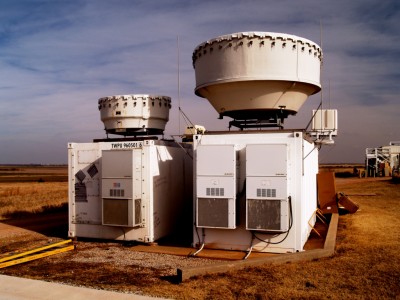
Since it began operating in 1996, the MMCR set the standard for providing data about cloud boundaries, vertical velocity, and reflectivity. Through the American Recovery and Reinvestment Act of 2009, ARM was provided the opportunity to significantly update the radar’s technology. As a result, the KAZR is essentially a new radar. Sourced by a different manufacturer, it uses only two of the same components—the antenna and transmitter—as the previous model. Although the user community must familiarize itself with a new instrument name, the ingested data format is as similar as possible to the historical MMCR ingest. Additionally, the change should be transparent for researchers who use data from the MMCR through the widely used Active Remotely Sensed Cloud Locations, or ARSCL, value-added product.

